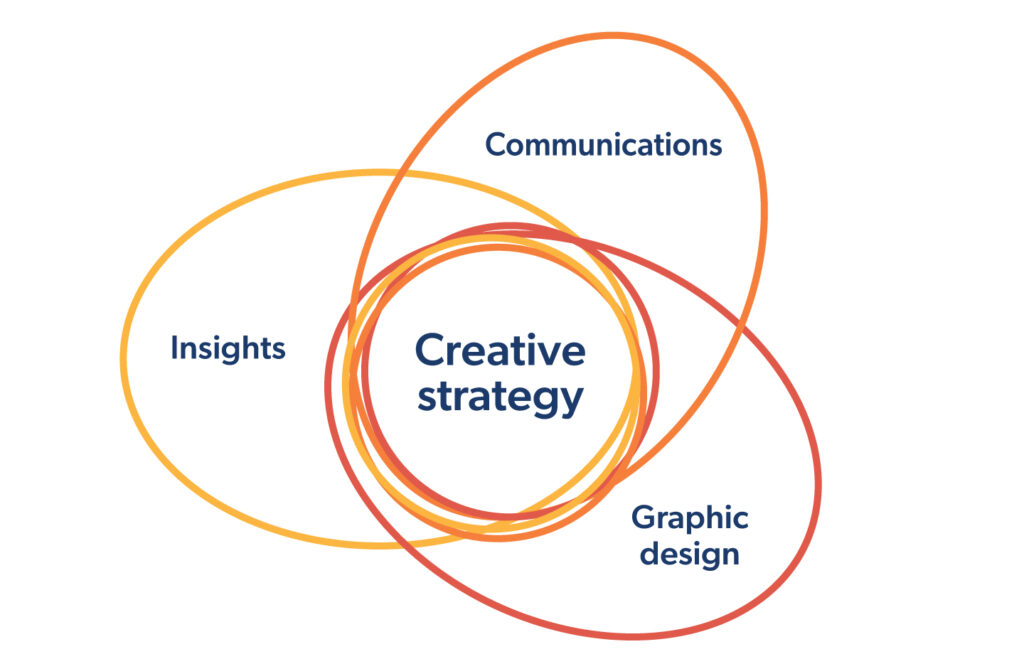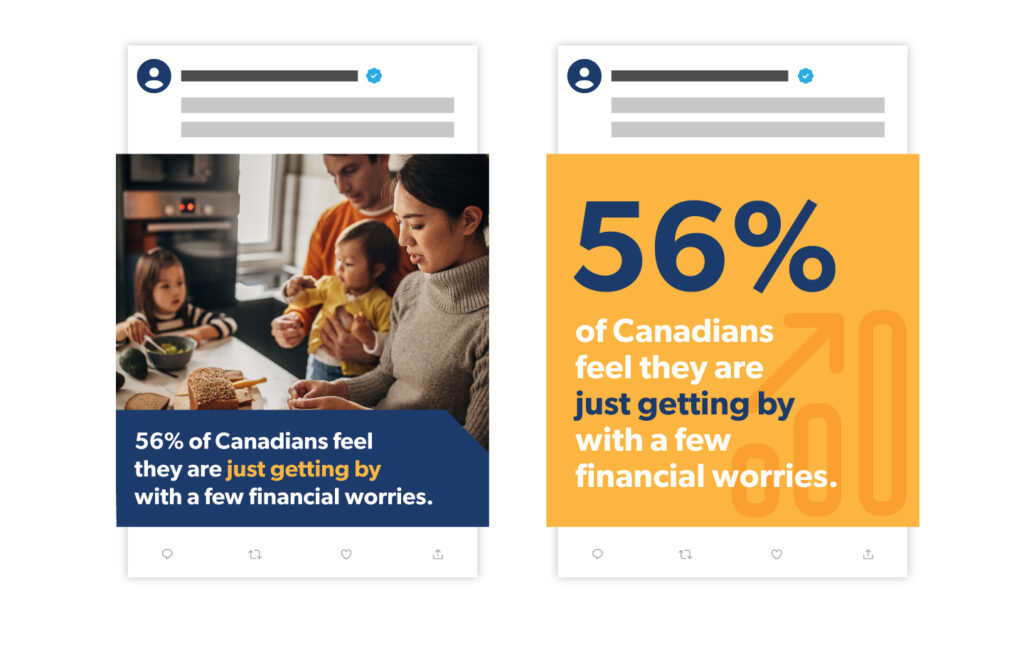Written by Patricia Lacroix.
Strategy is a natural part of any plan of action to create desired outcomes – whether you are influencing government policy, shifting public opinions, or crafting stories that attract media coverage. It starts with a plan. Defining the tools, tactics and considerations that guide you to make the right choices, at the right time and successfully achieve your goals. When it comes to effectively defining your message, creative strategy has a role to play.
Today, attention spans are short, messages are many and the advocacy space is very crowded. If your message isn’t clear or doesn’t feel novel and interesting, your audience is likely to ignore it — or worse, forget it. A strategy that is shaped through a creative lens will level up your ability to resonate with the right people and make a greater impact. A creative strategy means enhancing your GR or PR strategy with both visuals and content to break through the noise.
What is a creative strategy?
At the intersection of insights, communications, and graphic design – is the creative strategy. Whether intentional or not – the way a message is presented will either help or hinder what you are trying to communicate.

The tools in a designer’s toolbox — like colours, photography, animation or illustration can make a huge difference in how your message or brand is perceived. Creative decisions in the writing process can paint a broader picture in people’s minds. Even small details like the placement of a logo or a font choice can change the perception of a message.
Different imagery, for example, can make a powerful statement next to your message. The same text next to different visuals tells two different stories. If a message about Canada’s cost of living is next to a photo showing a family at home it feels more emotional, and relatable, bringing to mind your own family – and what it’s like to struggle financially. The same words next to an icon and large statistics feels sober, data-driven and direct, focused on facts. These two different treatments emphasize different aspects of the message, despite using the same words.

Adding a creative approach to your communications plan will ensure the right tone is created and highlight different aspects of your message in nuanced ways that communicates a higher level of sophistication and care to your audience right from the start.
Show AND tell
Many of our clients come to us with great information, compelling data and a strong point of view. Even with a persuasive message, we know from experience and research that people recall information better when there is a visual to linked to it. A related visual will make your headline, tweet or document connect more strongly with your audience, making the information more digestible and relatable. A good creative strategy reinforces your message, with an image that ensures the right emotional response.
A good-looking design can make an impact, but a thoughtful, strategic approach to creative also turns your information into a story. Combining engaging visuals and snappy words in harmony builds a narrative that strikes the right tone, while delivering nuance and relatability that helps you stand out in a crowded media landscape. Showing your audience, in addition to telling them, improves message recall and accelerates the success of your initiative.
While this approach is often used in traditional marketing and advertising, it remains true for any audience and message. When you use the right visuals to get attention from the people you want to reach, a creative strategy takes it a step further to ensure you are using every element on the page or screen to create a deeper understanding.
Grab attention, with tailored information
You’ve heard “the medium is the message” and today this is more true than ever. The mediums, media types and platforms available are endless. Moreover – many mediums (especially social media) now dictate how much text you can use, how large an image can be, how long a video can play, who can see it and what it will appear next to.
Building a cohesive visual ecosystem across mediums tells your audience that time and effort went into communicating the message, and signals that it’s from a legitimate source. A family resemblance across different mediums strengthens a brand and shows that different messages are part of the same overarching narrative – from the same source. How these pieces differ is where it gets more complicated.
Whether you are creating an informational printout to leave in an MPs office, a branded banner to pop-up at a conference, or a Twitter post with an explicit call to action, your message should be written and designed with the format in mind. To hold attention your message must be easy to understand and have a defined purpose. Start from a foundation of short, clear key messages and tailor it for longer or shorter formats. When it takes too long to get to the point (especially online), or the visual competes with the text, people will lose interest and look elsewhere.
The right customization ensures you message is communicated effectively on different platforms. Think carefully about where your message will be seen, what you want your audience to do and how other messages in that space will compare. A print ad shouldn’t say “Click here to learn more” and a social media ad be short and to the point. A smart creative strategy ensures this optimizing thought process is foundational to how your message is presented.
Give your message a creative lift
Ultimately, every creative choice is an opportunity to elevate your message.
We believe that tailored creative strategies give a message flight – adding an x-factor to advance your outcomes. We champion an approach that communicates your unique intent, with creative that makes it memorable and strategic executions that add meaning your audience will connect with.
To find out how a creative strategy can give your messaging a lift, contact us.
